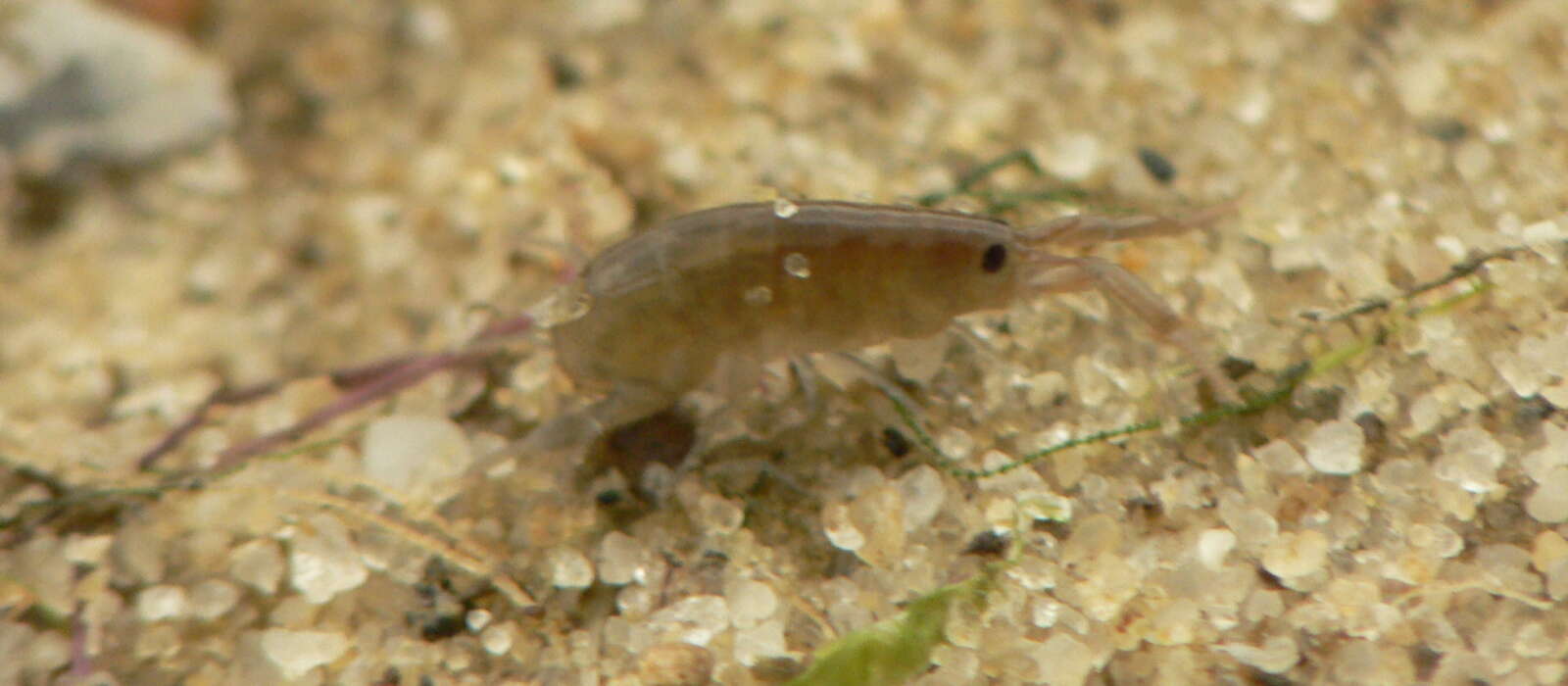Freshwater and Terrestrial Crustacea
The separation of the freshwater and terrestrial crustaceans from the marine species is taxonomically an entirely artificial one, though this distinction makes sense from the perspective of the practical naturalist. Insofar as known now, there are only twelve species known from the island that fall into the freshwater/terrestrial category. One of the species is very common and known to virtually everyone (the “pill bug” Armadillidium vulgare) and is the only terrestrial species we know of here. Other exotic (i.e. non-native) pill bug species may also be present here, as there is evidence that some have been introduced into eastern Massachusetts through the importation of lumber, plants, or topsoil. The other eleven known crustaceans are primarily restricted to freshwater environments and will probably have been observed by very few people.
The most authoritative study of the Malacostrascan species known from southern New England is that of Smith (1997), which lists 25 species, only three of which are known here despite intensive work over the last 20 years or more. In conversation with Dr. Smith, it was learned that the Amphipod Crangonyx aberrans should be sought here. It is an endemic known only from southeastern New England and has been found on Block Island but not on Cape Cod, Martha’s Vineyard or Nantucket; its absence in the latter areas is a zoogeographical anomaly. The Amphipod Synurella chamberlaini was probably present historically and should also be looked for today. It prefers white cedar or maple swamps with slow-moving water, a habitat type less common today than in the pre-colonial period before the virtual deforestation of the island and the apparent total elimination of native white cedar swamps. The Clam Shrimp (Lynceus brachiurus) is common in much of nearby Massachusetts and should be present; normally it is more common than Limnadia lenticularis, which is known here. The Fairy Shrimp (Eubranchipus intricatus) should also be here, though it is rarer than E. vernalis, which has been found; E. intricatus should be looked for in vernal pools. No species of native fresh-water crayfish has yet been found here; if one is found it is most likely to be Procambarus acutus. If any other crayfish are present, they were probably introduced. Smith (1997) lists six crayfish species which have been introduced in eastern Massachusetts, probably by persons interested in establishing a source of fishing bait. The exotic species most likely to be found are Orconectes virilis and O. limosus.
Despite much searching, no freshwater Ostracods have been found on the island. Furtos (1935) lists ten species from Cape Cod, most of which have been found as close as Falmouth or the Elizabeth Islands, so some of these may yet be found here by an energetic field worker. Only five species of Copepods have ever been discovered here. More might be found by a motivated searcher. It also seems likely that there are several species of Cladocerans, especially of the genus Daphnia, present here, though no one seems to have done the necessary work here to prove or disprove this contention.
The distribution of the Crayfish Procambarus acutus, though not known here, is very interesting for zoogeographical reasons. Its natural distribution in New England is confined, essentially, to mainland southeastern Massachusetts and to Rhode Island (Smith, 1982). It next appears in extreme southeastern New York and northern New Jersey, extending from there south in virtually every other fresh-water drainage that reaches the coast all the way to Mississippi. In other words, for a distance of about 120 miles it is absent. The same distribution pattern exists for two fish (Hartel et al. 2002:37), a turtle (Lazell, 1976), a large freshwater leech (Smith, 1977) and certain plants (Fernald, 1929). There have been several suggested explanations for this anomaly over the years, the most persuasive of which are (1) a giant residual ice block in what is now Long Island Sound long after the retreat of the rest of the continental ice sheet (Schmidt, 1986) or (2) the rise of salt water into glacial Lake Connecticut (Whitworth, 1996). Either or both of these hypotheses could have prevented the colonization of this area by freshwater species.
A useful key to the families and many genera of fresh-water invertebrates of the United States is Pennak (1978).
Allan Keith; edited by Matt Pelikan, May 24, 2023
References
Furtos, N. C. 1935. Fresh-water ostracoda from Massachusetts. Journal of the Washington Academy of Sciences, 25(12):530-544.
Pennak, P. W. 1978. Fresh-water invertebrates of the United States. J. Wiley & Sons, New York. Second edition. 803 pp.
Smith, D. G. 1982. Distribution of the Cambarid Crayfish Procambarus acutus acutus (Girard) (Arthropoda: Decapoda) in New England. Freshwater Invertebrate Biology 1(1):50-52.
Smith, D.G. 1997. An annotated checklist of Malacostracans (Crustacea) inhabiting southern New England fresh waters. Journal of Freshwater Ecology, 12(2):217-223.
Whitmore, G. D. (2008). The Macroinvertebrate Stream Fauna of Martha’s Vineyard, with Records from Southeastern Mainland Massachusetts. Transactions of the American Entomological Society, 134(3), 431-457.
